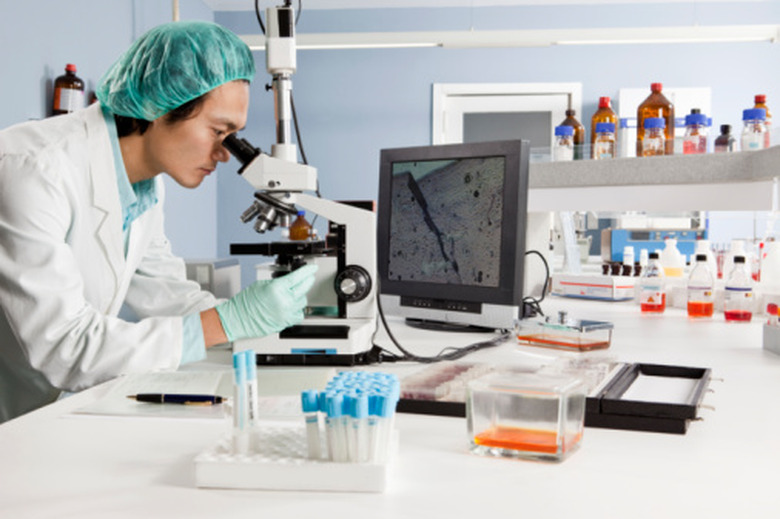Cell Characteristics
Cells are the basic unit of life. Every living organism, from the simplest microorganism to the most complex plants and animals, is made of cells. Cells are the site of metabolic reactions and the places where genetic material is housed. Other molecules such as glucose and fats are stored within cells as well.
General Cell Characteristics
General Cell Characteristics
Cells, whether from an animal or a plant, have many interior structures called organelles. The mitochondria is the organelle that supplies energy to a cell while the nucleus houses genetic information in the form of chromosomes. The tubular network that makes up the endoplasmic reticulum is a cell's transport system, and the similarly structured golgi apparatus acts as a packaging system for a cell. Lysosomes contain digestive enzymes, and ribosomes are the site of protein synthesis. All organelles are surrounded by a clear, jelly-like substance known as cytolasm.
Plasma Membrane
Plasma Membrane
All cells are surrounded by a plasma membrane. Composed of a phospholipid bi-layer infused with proteins, a cell membrane gives shape to a cell. Phospholipids are made up of two parts, a hydrophilic head and a hyrdophobic tail. The tails of both layers face each other on the inside of the membrane, and the heads face the watery environments inside and outside a cell. This arrangement is known as the fluid mosaic model. The various proteins scattered throughout the phospholipid layers assist in the transfer of nutrients and waste into and out of a cell.
Plant Cells Differ from Animal Cells
Plant Cells Differ from Animal Cells
Although all cells have a cell membrane, plant cells have an additional more rigid outer layer known as a cell wall as well. Cell walls are composed mainly of cellulose and are strong enough to prevent a plant cell from exploding when it fills with water. Cell walls also help a cell keep its shape and provide strength for a plant to grow.
In addition, plant cells contain chloroplasts whereas animal cells do not. Chloroplasts house the pigment chlorophyll, which is essential for photosynthesis. These organelles allow plants to process food from sunlight.
Cite This Article
MLA
LaRoche, Carolyn. "Cell Characteristics" sciencing.com, https://www.sciencing.com/cell-characteristics-7430390/. 24 April 2017.
APA
LaRoche, Carolyn. (2017, April 24). Cell Characteristics. sciencing.com. Retrieved from https://www.sciencing.com/cell-characteristics-7430390/
Chicago
LaRoche, Carolyn. Cell Characteristics last modified August 30, 2022. https://www.sciencing.com/cell-characteristics-7430390/
